 |
Prof. Dionisio Bernal, Northeastern University, USA. Dionisio Bernal obtained his PhD in 1979 at the University of Tennessee and is a Professor and director of the structures area at Northeastern University (NU) in Boston. He is the recipient of the Moisseiff Award from the American Society of Civil Engineering (ASCE) for his work on instability of structures subjected to strong earthquakes and of the Martin W. Essigmann and the Hayes awards for teaching and research excellence at NU. He has published over 100 papers on structural dynamics, earthquake engineering and damage characterization from measured signals and is co-Author of a McGraw-Hill textbook on Reinforced Concrete Design. He served as the Chair of the Health Monitoring task group of the Engineering Mechanics division of ASCE from 2001 to 2003. |
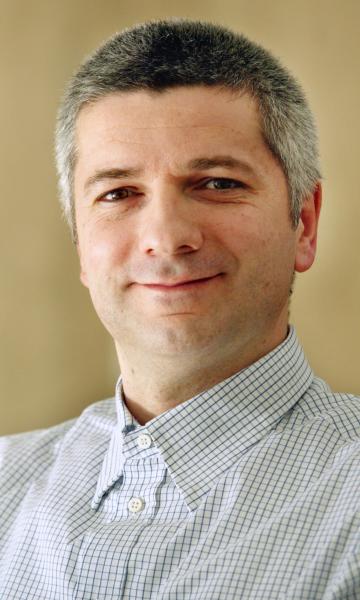 |
Prof. Branko Glisic, Princeton University, USA. Branko Glišić received his degrees in Civil Engineering and Theoretical Mathematics at University of Belgrade, Serbia, and Ph.D. at the EPFL, Switzerland. After eight-year long experience at SMARTEC SA, Switzerland, where he was involved in numerous SHM projects, he has been employed as an Assistant Professor at Department of Civil and Environmental Engineering of Princeton University. His main areas of interest are SHM methods, advanced sensors based on fiber-optics, large-area electronics and conductive polymers, SHM data management, and smart structures. He introduced SHM in classrooms as regular undergraduate and graduate courses at Princeton University. Prof. Glišić was awarded 2013 SHM Person of the Year Award by the editors and associate editors of “Structural Health Monitoring: An International Journal” and along with his collaborators he won the First Place at the 7th Princeton Innovation Forum with his research on sensors based on large-area electronics. He is author and co-author of more than hundred published papers, short courses on SHM, and the book “Fibre Optic Methods for Structural Health Monitoring”. He is a member the Council of ISHMII, editor-in-chief of the ISHMII’s newsletter “Monitor”, voting member of ACI committee on SHM, and member of several other professional associations (IABMAS, ASCE, etc.). |
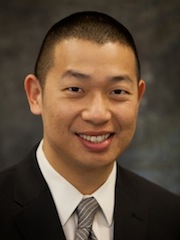 |
Kenneth J. Loh, University of California, Davis, USA. Dr. Kenneth Loh joined the Department of Civil & Environmental Engineering at the University of California, Davis as an Assistant Professor in 2009 and was promoted to Associate Professor with tenure in 2014. He was also a U.S. Fulbright Scholar in Taiwan and Visiting Associate Professor in the Department of Civil Engineering at the National Taiwan University in 2014. Prior to this, he received his B.S. degree in Civil Engineering from Johns Hopkins University in 2004. He continued his graduate studies at the University of Michigan, where he completed two M.S. degrees in Civil Engineering (2005) and Materials Science & Engineering (2008), as well as a Ph.D. in Civil Engineering in 2008. His research interests include multifunctional materials, nano-engineering, composite materials, biologically inspired systems, and resilient structures. Dr. Loh’s recent honors include the Achenbach Medal, NSF CAREER Award, SPIE Senior Member honor, and several best paper awards. |
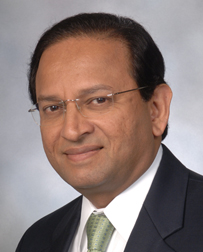 |
Prof. Satish Nagarajaiah, Rice University, USA. Satish Nagarajaiah is a Professor of Civil and Environmental Engineering at Rice University in Houston, and is affiliated with the Mechanical Engineering Department, Material Science and Nano-Engineering Department. He obtained his Ph.D. (1987-1990) from State University of New York at Buffalo, where he was a post-doctoral researcher before he started his academic career in 1993. His teaching and research interests are in the areas of structural dynamic systems, seismic protection, earthquake engineering, structural control, system identification, structural health monitoring and applied nanotechnology. His research is funded by the NSF, NASA, Department of Energy, Air Force Office of Scientific Research, Office of Naval Research, other State, Federal, Private Agencies and Industries. National Science Foundation has awarded him the prestigious faculty early CAREER award for innovative research in Adaptive Stiffness Structures. His editorial activities include service as the managing editor of the journal of structural engineering [ASCE International journal], Editor of the structural control and health monitoring journal [Wiley International Journal] and Editor-in-chief [North America] of Structural Monitoring and Maintenance [Techno-press International Journal]. He and his coworkers were awarded the ASCE Moisseiff award in 2015 for contributions on Adaptive Stiffness Structural Systems. Structural Engineering Institute (SEI) of ASCE elected him as an inaugural fellow in 2012. He served as the chair/vice-chair/secretary/member (2006-to-2012) of ASCE, SEI, Technical Activities Division Executive Committee TAD-ExCom—the highest technical body in SEI. He served as a member of the board of directors of the international association of structural control and monitoring (2008-2012). He served as the President of the U.S. panel on structural control and monitoring (2006-2008). He was the founding chair of ASCE structural health monitoring committee (2004-2006), ASCE-Engineering Mechanics Institute, and chair of the structural control committee (1998-2002), ASCE Structural Engineering Institute. For further details visit his website satishnagarajaiah.rice.edu. |
 |
Prof. Wieslaw M. Ostachowicz, Polish Academy of Sciences (IFFM), Poland. Dr. Wieslaw Ostachowicz is the Full Professor of Mechanical Engineering at the Institute of Fluid Flow Machinery, Polish Academy of Sciences. He has led dynamics research throughout the last twenty years as the chairman of the Department: Mechanics of Intelligent Structures. His research spans several important sub–disciplines: smart structures and materials, structural health monitoring, extended non–destructive testing and damage assessment analysis. Prof. Ostachowicz personally specializes in various structural health monitoring techniques, vibration control, structural dynamics, composite structures, multifunctional materials, smart materials and structures, damage assessment of structures, working in these fields both theoretically and experimentally. In the past six years his research has focused on the development and use of the Spectral Finite Element Method for damage assessment as well as smart materials applications. Prof. Ostachowicz has published 4 monographs, 6 book chapters, 4 proceedings volumes, 127 articles distributed in the highest–quality international journals, and over 100 technical reports in the fields of structural dynamics and SHM. Dr. Ostachowicz has assumed leadership roles in the international smart structures and structural health monitoring community having served as the Associate Editor of the following journals: Structural Health Monitoring; Smart Materials and Structures; Intelligent Material Systems and Structures. More recently Dr Ostachowicz has served as the Chairman of the SHM Person of the Year Awards Committee. |
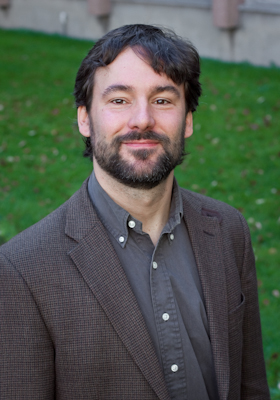 |
Prof. Matteo Pozzi, Carnegie Mellon University, USA. Matteo Pozzi is an assistant prof. in the CEE dept. at CMU. His research deals with risk analysis for civil infrastructure systems, using engineering models and sensor data. Particularly, it is focused on probabilistic models for seismic vulnerability, deterioration, optimal planning for mitigation of extreme events, maintenance and inspection scheduling. He has developed fiber optic sensors for integration in bridges and wireless sensors for measuring strain and vibration. He received a Ph.D. in structural engineering from the University of Trento (Italy) and, prior to CMU, he was a post-doc researcher at UC Berkeley. |
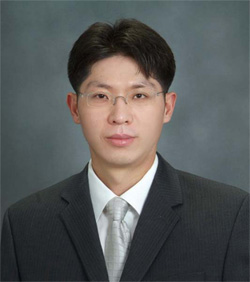 |
Prof. Hoon Sohn, Korean Advanced Institute of Science and Technology (KAIST), Korea. Prof. Hoon Sohn received his B.S. (1992) and M.S. (1994) degrees from Seoul National University, Seoul Korea and PhD (1999) from Stanford University, California, USA, all in Civil Engineering. He is now Professor at KAIST. Over the last fifteen years, his research interest has been in the area of structural health monitoring and smart sensing technologies. He has published over 100 refereed journal articles, over 250 conference proceedings, and 5 book chapters. In 2012, he was selected as among the 100 most promising individuals in Korea by one of the three major newspapers in Korea. He was also the recipient of SHM Person-of-Year Award at the 2011 International workshop on SHM and 2008 Young Scientists Award in Korea, which is similar to the Presidential Early Career Award from US National Science Foundation (PECASE Award). He serves as Associate Editor of the International Journal of Structural Health Monitoring, and as Editorial Board Member of the International Journal of Smart Structures and Systems and International Journal of Structural Control and Health Monitoring. |
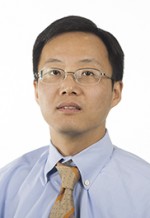 |
Prof. Yang Wang, Georgia Tech, USA. Dr. Yang Wang is an Associate Professor in the School of Civil and Environmental Engineering at the Georgia Institute of Technology. After completing a B.S. and an M.S. degree in Civil Engineering at Tsinghua University in Beijing, China, he received a Ph.D. degree in Civil Engineering and an M.S. degree in Electrical Engineering at Stanford University in 2007. Dr. Wang’s research interests include structural health monitoring and damage detection, decentralized structural control, wireless and mobile sensors, and structural dynamics. He has published over 100 journal and conference papers in the topic areas. Dr. Wang received an NSF Early Faculty Career Development (CAREER) Award in 2012 and a Young Investigator Award from the Air Force Office of Scientific Research (AFOSR) in 2013. Since 2011, he has served as an Associate Editor for the ASCE (American Society of Civil Engineers) Journal of Bridge Engineering. |

